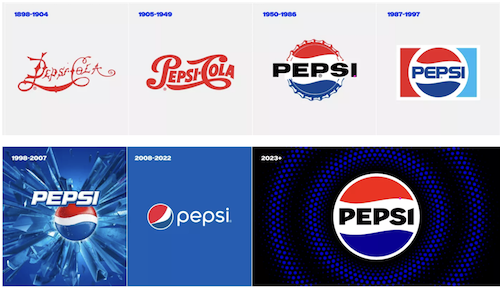Rebrand 101: How to create a successful rebranding strategy

It is not uncommon for brands to rebrand to ‘refresh’ or ‘reinvent’ themselves. However, any rebranding strategy must consider the need to clear and register any new trademark that you plan to use, as Megan Taylor explains.
Several factors can influence a specific rebrand or re-design of a logo, including trends in the market, political influences or to signify a change of ownership. If you’re planning a rebrand, here are some key questions to consider when creating your rebranding strategy and some helpful examples.
Why rebrand?
- A change of message
 Most likely, you chose your brand to reflect the message you wish to convey to your target market, but over time the needs of your target market may change. A rebrand can help you stay relevant and maintain your market share.
Most likely, you chose your brand to reflect the message you wish to convey to your target market, but over time the needs of your target market may change. A rebrand can help you stay relevant and maintain your market share.
The recent rebrand of PrettyLittleThing (PLT) provides a notable example of such a major brand refresh. The UK fashion retailer's previous branding (pictured right), consisting of pink unicorns and bold simple text carries a very different impression of the brand to the recently updated calligraphy-styled logo with neutral tones (pictured below).

This rebrand is an excellent example of how brands evolve to ensure they remain relevant. Now marketing itself as source of “elevated fashion essentials” as part of its “next era”, PLT is seeking to put its “fast fashion” seamlessly behind it and is using its new branding to ensure this message reaches its consumers.
We cannot see if an application for the new logo mark has been filed at the UK Intellectual Property (UKIPO) yet; however, we can see that PLT does hold a registration for the word mark PRETTYLITTLETHING, which provides protection in a broad sense.
- A return to legacy branding
Sometimes it is not necessary to change a brand into something completely new when rebranding. It is common for brands to revert to their previous branding (also known as legacy branding); for example, by re-using old logos or even parts of them. This is the rebranding strategy PepsiCo chose in 2023 when celebrating its 125th birthday.

The soft drinks manufacturer describes this new logo as “timely and timeless”, explaining that the new mark projects both the “rich heritage” of the brand while simultaneously reflecting its ability to keep up with the times and remain modern by using a new font and bold colours.
PepsiCo already held a word mark for PEPSI as well as the greyscale version of the circle device (without text) at the UKIPO, which provides it with a general broad scope of protection for these specific elements.
However, we can see that when introducing the new brand, PepsiCo registered not only the new logo as a whole (as set out above), but also its separate elements, including:
- The central logo itself without a background
- The central logo in black and white (in conjunction with an outline of a can and the other with the outline of a cup)
- The stylised words on their own (we believe this is to protect the new typeface which has not been previously used)
Registering these new elements provides Pepsi with a much more defined and watertight scope of protection going forward.
- As part of a merger, acquisition or divestment
Another UK household name that is set to rebrand entirely is WHSmith, the longstanding high street stationery and bookstore.
As part of the recent sale of its high street business to Modella Capital, it has been announced that the stores will undergo a complete re-brand to TGJones. More information is set to be released on exactly how this rebrand will look but this is a good example of a rebranding strategy that can be used to signify a change in the ownership of a business following a complete or partial business sale.
Legal considerations
- What is the effect on registered trademarks?
A good starting point is to review your existing rights. You may have an existing registration that provides a broad scope of protection and, therefore, will cover your new mark.
Alternatively, if you do not have adequate (or any) protection for your new mark, it may be time to consider re-filing.
Before re-filing, it may be appropriate to conduct a trademark search(es) to ensure that your new brand does not infringe on any third-party rights.
Your trademark attorney can advise on whether your existing protection covers you and whether you need to re-file; if so, they can conduct pre-filing searches for you.
- Considerations for your commercial obligations
If you are seeking protection for a new version of your brand, it is important to consider the effect that this may have on your commercial obligations and agreements. For example, if you license your brand you may need to update the licence agreement. A rebrand could also impact settlement and co-existence agreements with third parties.
- What is the effect on unregistered rights?
In the UK, unregistered rights arise from the use of a mark, and so, in some cases, brand owners may choose not to protect a new version of their mark. However, registered rights are generally easier and more cost-effective to enforce than unregistered rights.
- What about design rights?
In addition to the traditional trademark route, you may also be eligible to register your mark as a design. There are specific factors that can influence your ability to do so, such as if the mark has been disclosed to the public, so it is best to seek advice from your local attorney first.
If you are considering a rebrand and would like advice on ensuring you receive the protection you need, including registering any new mark created as part of your rebranding strategy, please do not hesitate to speak to your Novagraaf attorney or contact us below.
Megan Taylor is a Part Qualified Trademark Attorney based in Novagraaf’s London office.